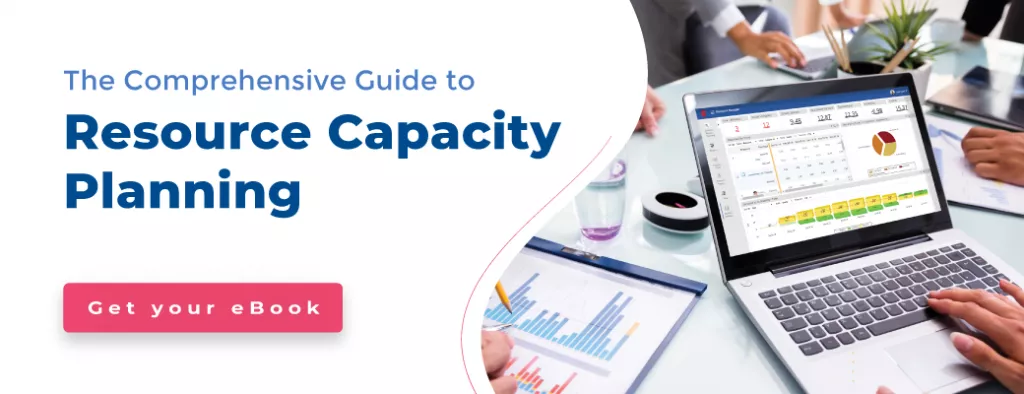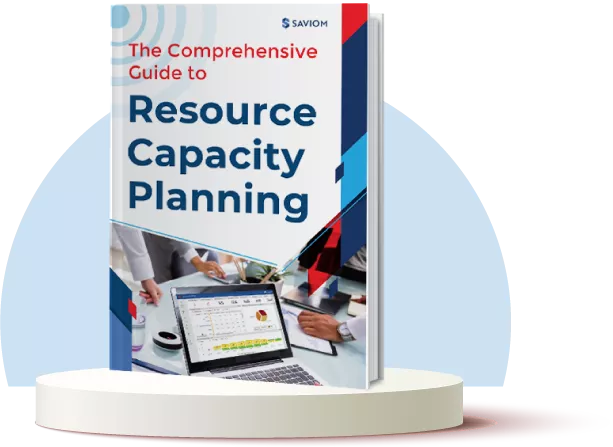‘Project roadblocks’, ‘project bottlenecks’, and so on are ominous words in a project manager’s lexicon. No manager will appreciate an eleventh-hour challenge and rethink, ‘Why didn’t I see this coming?’. It is necessary to get future-ready for pipeline projects.
When every attribute of the project is in place, including clear project goals, budget, and resources to execute the tasks, its success can be guaranteed.
Moreover, planning before project initiation equips them to effectively assess the project scope, feasibility and even bridge any existing skill gap.
In fact, according to HBR, companies with effective pipeline management had an average growth rate of 5.3, a 15 percent increase from companies who lack it.
However, managing the project pipeline is easier said than done. It requires a well-documented strategy that is followed for every project in the pipeline to standardize the process and ensure smooth execution.
This article takes you through the basics of project pipeline management and the steps you should follow to develop the right management strategy.

Addressing the first question,
What is Project Pipeline management?
Definition
Project pipeline management is a definitive process that consists of steps required to select the right project for the firm after assessing the scope, estimating revenue, and planning the appropriate resources in advance.
It ensures that the projects taken up by the firm meet the overall strategic objectives and positively impact the bottom line.
Objective
The main aim of project pipeline management is to ascertain that none of the critical project metrics are overlooked. It facilitates systematic documentation of the project plan, financial estimation, and resource capacity plan. Managing pipeline projects also streamlines the sales process by enabling smooth coordination and collaboration between the sales and delivery team.
Project pipeline management aligns the projects with the firm’s mission and vision. Only after diligently assessing the overall revenue, feasibility, and purpose of the project, can the project managers go ahead and take up the project. If the purpose of the project does not add value to the firm’s objectives, it’s not smart to invest resources and effort into it.
In a nutshell, the intent of implementing a project pipeline management strategy is to plan for last-minute hurdles in future projects. It will help you ensure its profitability and take a step ahead towards completing the firm’s strategic goals.
With the definition and objective of a pipelined project, let’s understand various steps associated with this process.
Read More: What is Project Resource Management? An Ultimate Guide
Steps to get your project pipeline management strategy right
Aristotle, the Greek Philosopher, explained the pipeline management process with his great philosophy,
‘First, have a definite, clear, ideal, practical, a goal, an objective. Second, have the necessary means to achieve your ends, wisdom, money, materials, and methods. Third, adjust all your means to that end.’
Implement right resourcing measures
Before taking up any project, the first step is to analyze if you have enough and the right resources to accomplish the project work. Committing without gauging the workforce and their competencies will affect the project’s quality and can negatively influence your firm’s reputation.
This step of assessing the resource pool serves two important purposes:
- It will help you get an overview of available resource capacity, their skillset, and their charge-out rates required to reach the project milestones.
- Based on the availability and capacity, managers can assess the resourcing measures (hiring/upskilling/reskilling/training) they need to implement to begin the project. At the same time, they can also evaluate if the project is profitable after estimating the resourcing costs.
Since budget and timeline are the deciding factors of a project’s success, managers must take a closer look at the firm’s workforce and skill matrix.
Equipping an advanced resource management tool will provide a birds-eye view of the resource profiles, and schedules. This unified view makes the first step of the project pipeline management strategy convenient and hassle-free.
Gauge every factor and make accurate estimates
The accuracy of estimation and evaluation of project parameters decide if you will face future project bottlenecks.
For example, if there is a mismatch between actual resources required to complete a critical task versus your estimation, then you will face challenges in the project execution. Either you will have to request resources from resource managers at the last minute or hire expensive resources. This will not only affect your project’s timeline but also cause budget overruns.
Project managers must therefore draw out an accurate estimated project plan to ensure timely delivery and within budget. In addition to evaluating resourcing measures, managers must meticulously estimate the budget, potential risks, goals, and most importantly, the overall revenue. All these factors put together define the quality and success of your final deliverable.
After analyzing every factor, project managers are authorized to take a ‘go’ or a ‘no-go’ decision based on two main parameters:
- If the revenue meets the organization’s expectations or
- Whether the project helps you meet the firm’s strategic goal
Read More: What is Resource Scheduling? A Beginner’s Guide to Project Success
Create a sound financial roadmap to ensure profitability
Generating substantial revenue after project completion is imperative to get a significant Return on Investment (ROI). When your project is profitable, it improves your firm’s topline.
Naturally, no program or project manager wants to invest in efforts, time, and resources where there is no return.
After deciding which projects are feasible and beneficial, the next step will be to draw out a sound plan in the form of a financial roadmap.
First, of all, categorize the projects in ‘likely’, ‘not likely’, and ‘certain’ sub-sections to assess the profitability of the overall pipeline. Work on developing the plan for projects with a higher probability of occurrence.
Consider the following tips while you generate this plan:
- Create the right resource mix having the right skill sets to keep the project costs in check.
- Allocate work to the workforce from low-cost locations with the same competencies to minimize project resourcing costs.
- Learn from the past project’s ‘forecast vs. actual’ reports to improve future forecasting and align it to reality. Similarly, use past forecast vs. actual timeline reports to ensure that you stick to the given period and avoid facing a billing loss.
- Run what-if analysis on advanced tools to generate the best outcome. It enables you to simulate different scenarios with the given constraints and select the most profitable one.
These above-mentioned management tips will enable you to reduce resourcing costs and enhance accuracy in project financial planning. Moreover, you will be able to find out the best-fit resources to increase the profit margins. An intuitive forecasting and capacity planning tool will help you achieve all this and more.
Read More: Master the Art of Resource Planning Across Multiple Projects
Review and improve your sales process periodically
An effective sales process builds the foundation of a successful pipeline. A pipeline consists of multiple projects and not every project is on the same stage. Some are yet to be approved, some are certain to happen, and so on.
The sales team has to coordinate with the project execution team to keep track of these projects while they are generating more leads for the firm. Thus, given the complexities of sales and delivery, managers must strive to establish a well-defined sales process.
One should take care of the following aspects whilst developing this process:
- Categorize and sub-divide projects to clarify the stage of each one of them. Provide this visibility to the delivery team to help them plan the projects better.
- While some team members are working with the delivery team to specify the client’s expectations and deliverables, ensure that others are following up with the leads. This will keep the sales workflow going.
- Collaborate with the delivery team at regular intervals to ensure that the project work is in-line with the client’s requirements.
- Along with syncing with the delivery team, keep the accounts team in the loop to ensure timely payments from the clients.
- Communicate the timeline, milestones, and budget to the client with utmost transparency. Convey the progress of projects at each stage to ensure that the team is working in the right direction. In case of discrepancies, take feedback from the client, communicate the same to the project managers, and act proactively.Note that, in case your client wants multiple amendments to their requirements, do not hesitate to clarify the extra costs that they might incur.
- Last but not the least, review and weigh your sales process regularly. Use historic data to ensure that the mistakes aren’t repeated. Take feedback from the sales and delivery team. Make necessary changes and evolve the process as and when needed.
The bottom line is, for a pipeline to be successful, the sales and delivery team must work in a coalition.
The job of the sales team is to accept the projects that come our way. But the onus is on the delivery team to first analyze its feasibility, and if it is, take the necessary steps to get it right.
In case there is a misalignment between them, the project quality will suffer. Therefore, it’s imperative to establish an organized sales process and ensure all the authorities are informed.
These are the major steps to be followed to form an effective project pipeline management strategy.
Read More: What is Agile Project Management & How to Effectively Manage Resources?
In addition to this, project managers can leverage these additional tips to enhance the strategy and planning process even more.
Let’s have a look at them:
Conclusion- Takeaway tips
- While selecting projects, the delivery team or the project managers must analyze the financials and take up the ones that will generate recurring revenue.
- Implement advanced project management and resource management tools to document and view real-time project progress.
- Project managers need to regularly keep in touch with the sales team to stay up-to-date about client’s expectations and requirements.
- Make the right resourcing decisions based on the project pipeline. Acquire critical resources for ‘most likely’ or ‘certain’ projects to bridge the capacity vs. demand gap in advance.
- Implement training or upskilling programs for resources already on the bench or likely to end up on the bench.
- Utilize intuitive reports and dashboards generated via Business Intelligence to get a comprehensive view of every project metric.
- Avoid allocating a mismatched skillset to a project task, as it will not only hamper the progress but will also lower the employee’s productivity.
These are the tips and tricks you can follow to manage the project pipeline efficiently. A methodical approach will improve project estimations, project and resource plans, and enable the managers to make data-driven decisions based on real-time insights.
What has been your approach for effective project pipeline management?
The Glossary
Read More: Glossary of Resource Workforce Planning, Scheduling and Management










